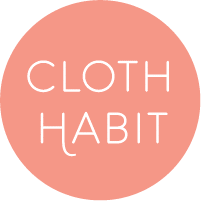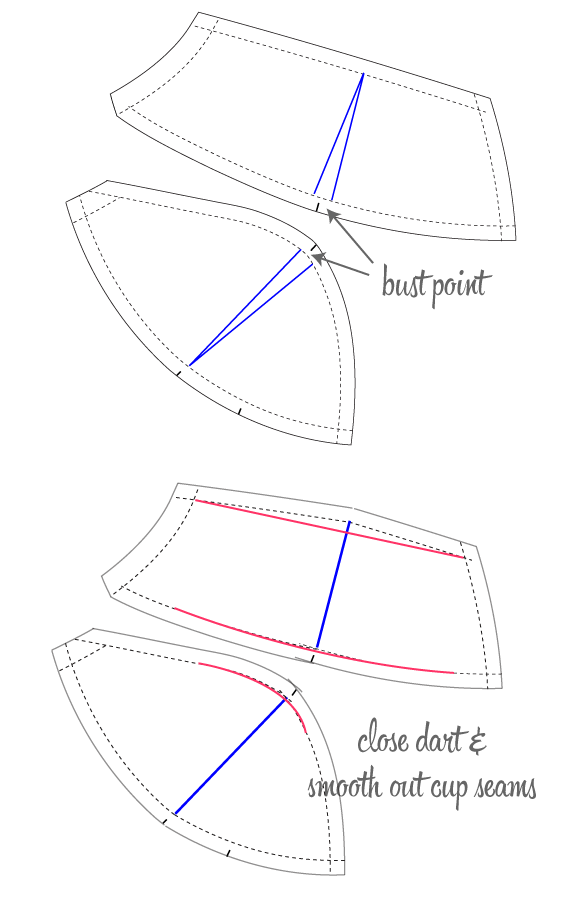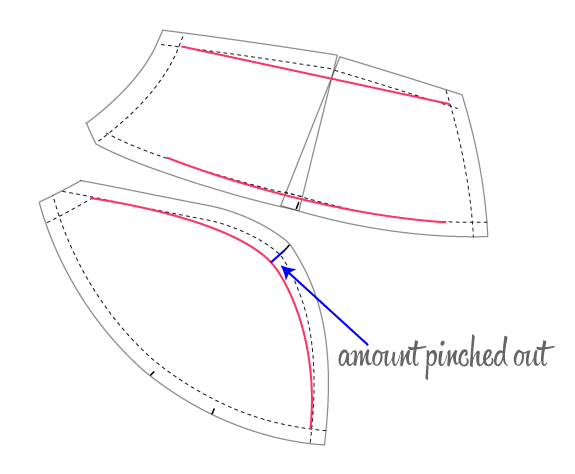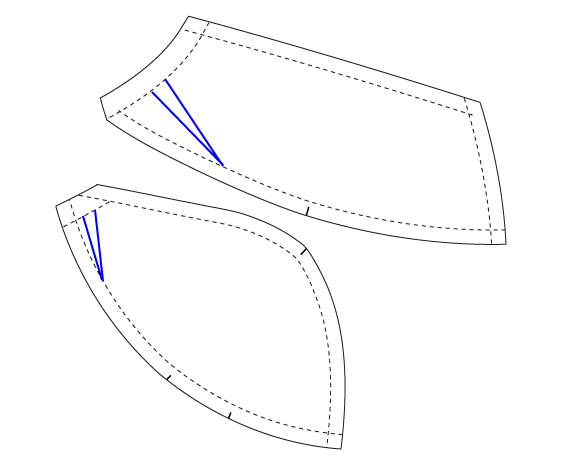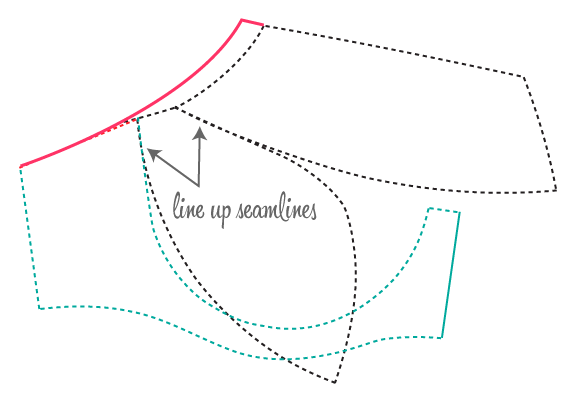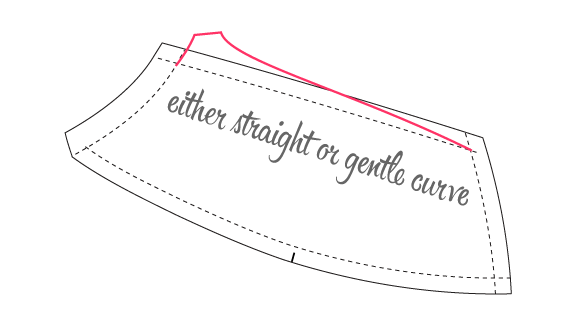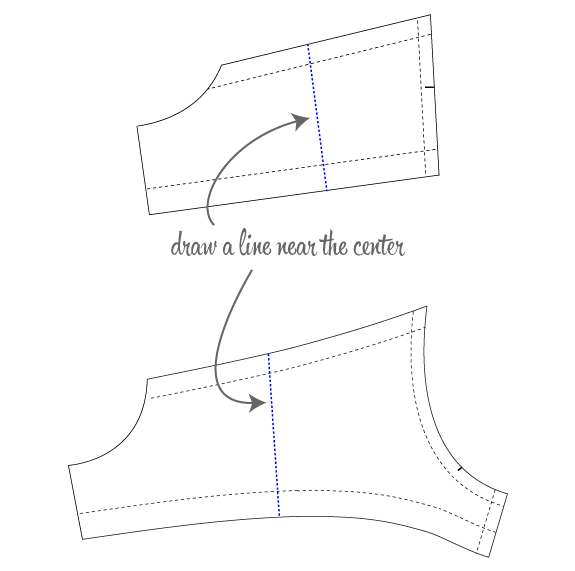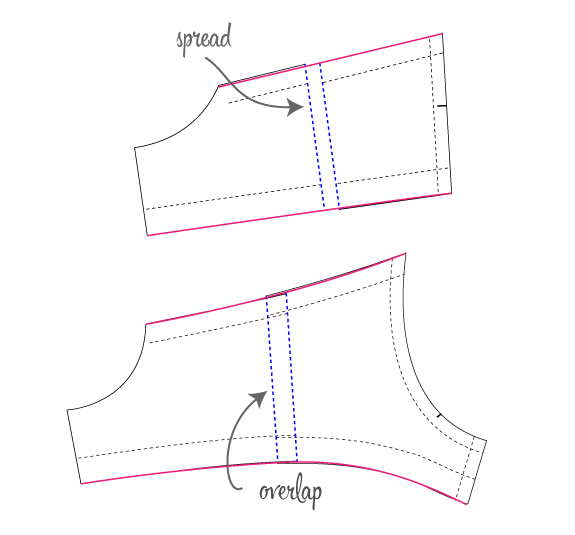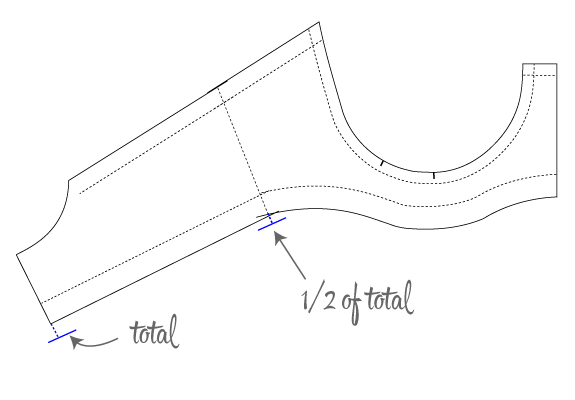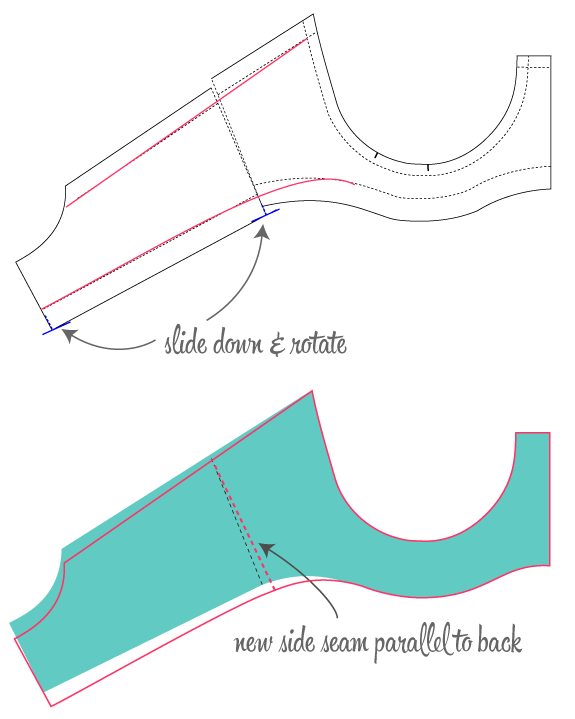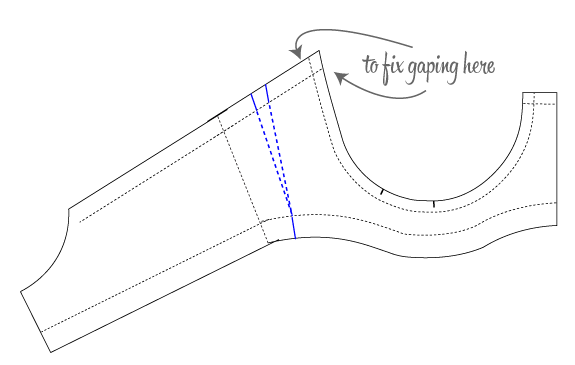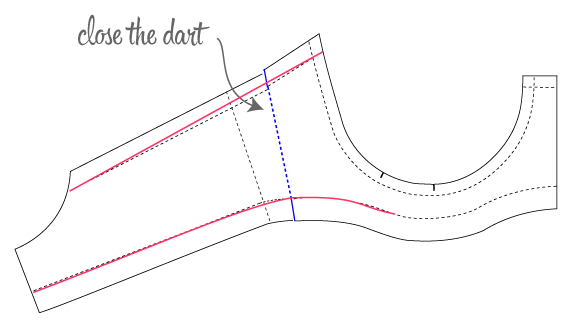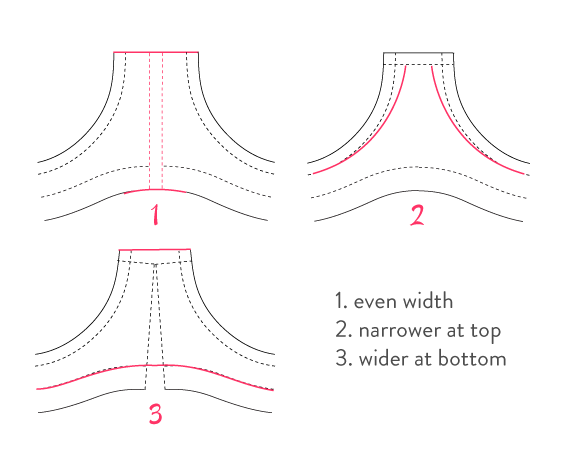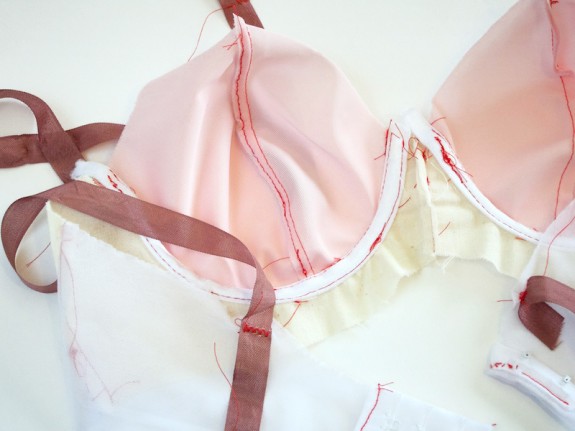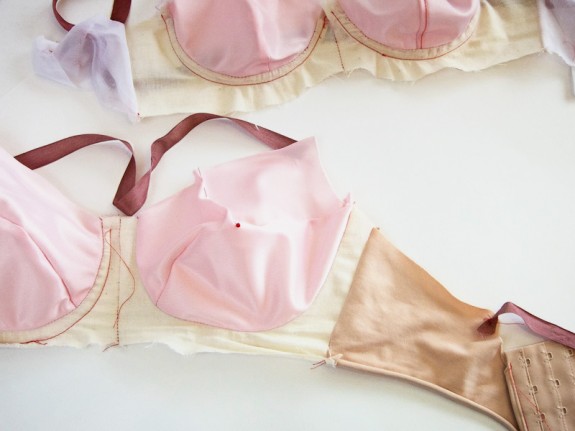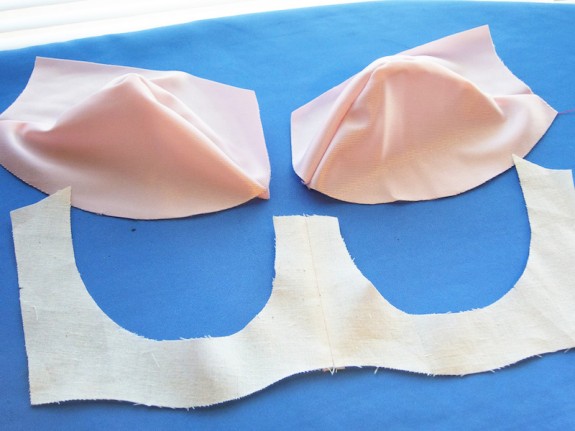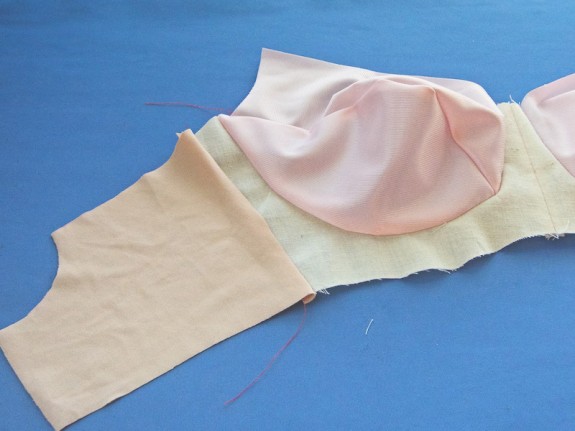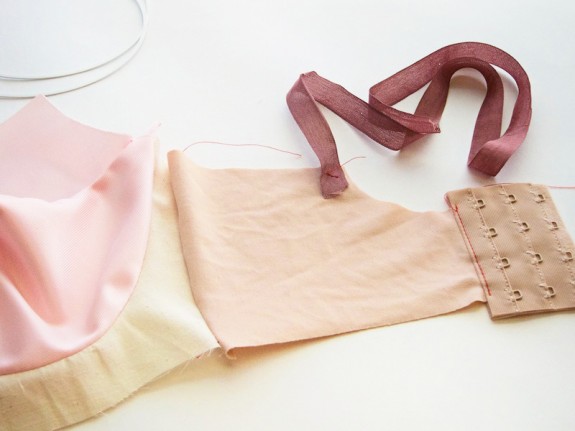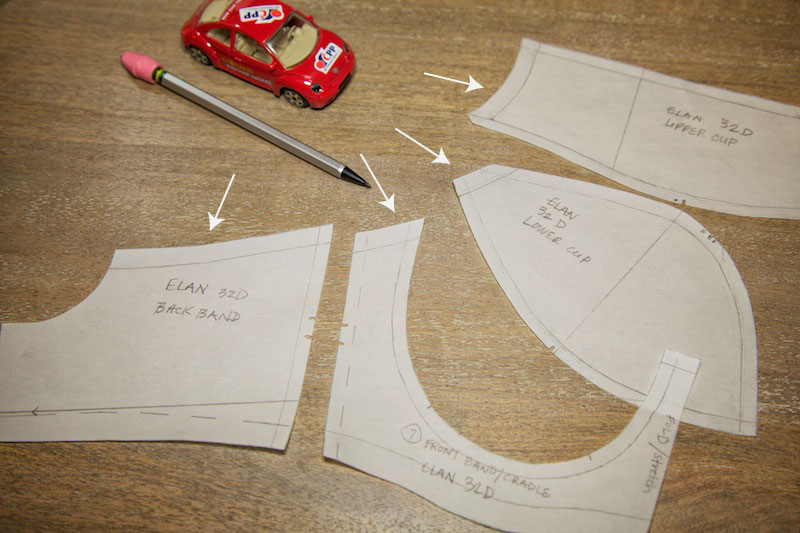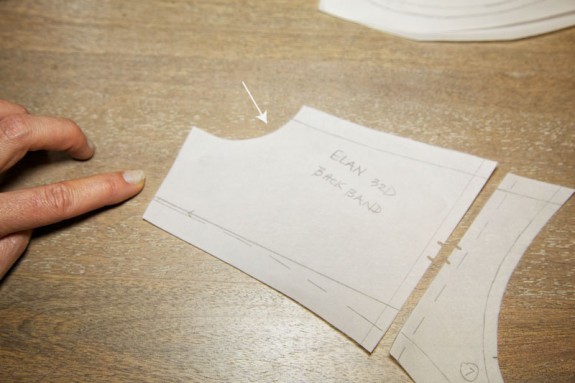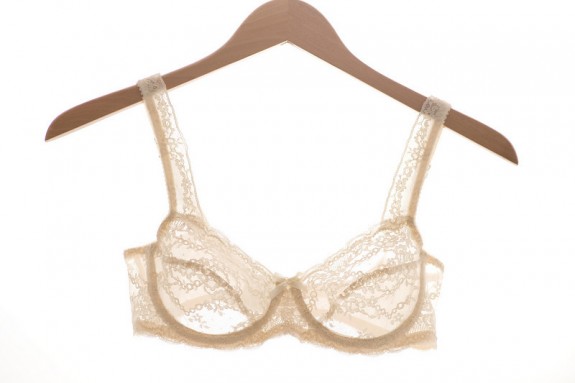
Today I’m going to turn the floor over to Norma Loehr, our guest bra-maker. She has been so gracious in joining the sew-along group and offering her expertise in bra fit and construction. I feel like I’m in bra bootcamp, don’t you?
You all had some great (especially fitting) questions for her and it was really hard to boil them down!
Q; The underwire size that fits me comfortably is about 2 sizes bigger than my bra size, and the wires are really high. I can’t find any shorter wires in this size. I’ve been cutting them off on both sides, filing and dipping them in adhesive. Do you have any tips to make this easier?
Yes, I frequently have to cut underwires to get them to fit into the bra. I use a DeWalt wire cutter that which snaps right through the underwire in one clip. To seal the edges, I use Household Goop which you can also find in the hardware store.
For both tasks I put the wire into a table vise so I can have both hands free and also don’t forget to wear eye protection! Those wire ends sort of fly off when you use the wire cutter.
I hope this makes the process simpler and faster for you!
Q: I have a prominent sternum and regularly have issues with the center wires digging in–especially if they are very tall. What sort of changes to my pattern do I need to make to accommodate this?
You should not need to make any pattern adjustments but you will need to reshape the underwire. I had a client with this exact issue and it was solved by bending the underwire in an outward arc, away from the body. The arc to accommodate your body should also help avoid the digging in at the tips of the wire because the wire won’t be tilted back in toward your body. You will need to experiment with the arc that works for you but do so in small increments because once wires are bent then do not go back to their original shape.
Q: I’m a 32A and most of the bra patterns I see seem like overkill for what little I have! I love the 15 minute set on your blog; do you know if there is an available pattern for something like that?
Lucky you! With an A cup you can wear whatever you want! Don’t worry about “overkill”, just make whatever style appeals to you.
If you like the 15 minute set the Kwik Sew 3167 with a band rather than the stretch lace at the bottom would be similar.
Q: I have a bit of a problem with east/west direction in my cups. What sort of seaming and other tricks do I need to do to achieve more front and center lift?
East/west really depends on where the pattern places the apex of the breast. A vertically seamed cup will be best at directing the breast tissue toward the center front.
In terms of lift, start with underwires and a band that fits properly. Look to the fabric and inner support to enhance the effect. In terms of fabric, use no more than 50% stretch for the band and a maximum of 25% stretch the cups. You can add inner cup support in the form of a power bar to also move the breast tissue out from the underarm and direct it forward and up.
Q: Is there anything essentially “wrong” with non-wired bras? My comfiest bras only have single straight bones at the underarm. The centre does not have a bridge and consequently doesn’t fit quite flat to my chest but this style is not particularly unflattering on me and is the only RTW one I can wear.
Underwires are the best way to get lift and support in a bra. Without underwires, both aspects will be decreased. It really is up to you and your preferences which is most comfortable and flattering for your figure. I suspect based on your comment that the wireless does not go back to the chest wall that you may be best off with an underwired bra.
Regarding wire size, I alway fit clients in an underwire separately from the cup sizing by trying the wire on them on its own. Getting the wire diameter correct is key for a comfortable wearing experience. It sounds like you have yet to find the right wire size so I would focus on that first. You can always cut the wire height down to fit into the bra.
Regarding the cup size, you should use the size that fits you best then combine the correct cup size with the correct wire size for your bra. This may require extending the cup at the underarm to fit the frame that corresponds to your underwire size.
——
One helpful thing she shared with many of us while fitting our bands: “I test band size by inserting two fingers perpendicular to the body under the hook and eyes fastened at the loosest setting. If the band will accommodate more than 2 fingers it is too big. Less than two fingers it is too small.”
She has written much more about customizing bra fit on her blog, too!
Thank you so much, Norma!
